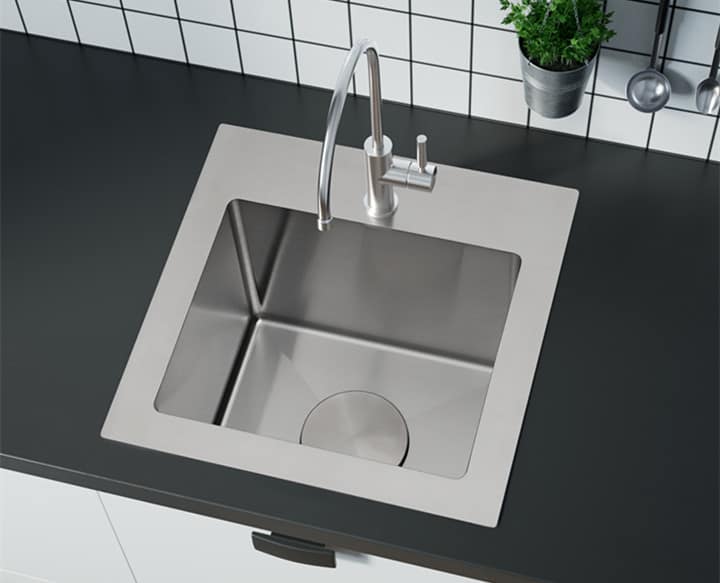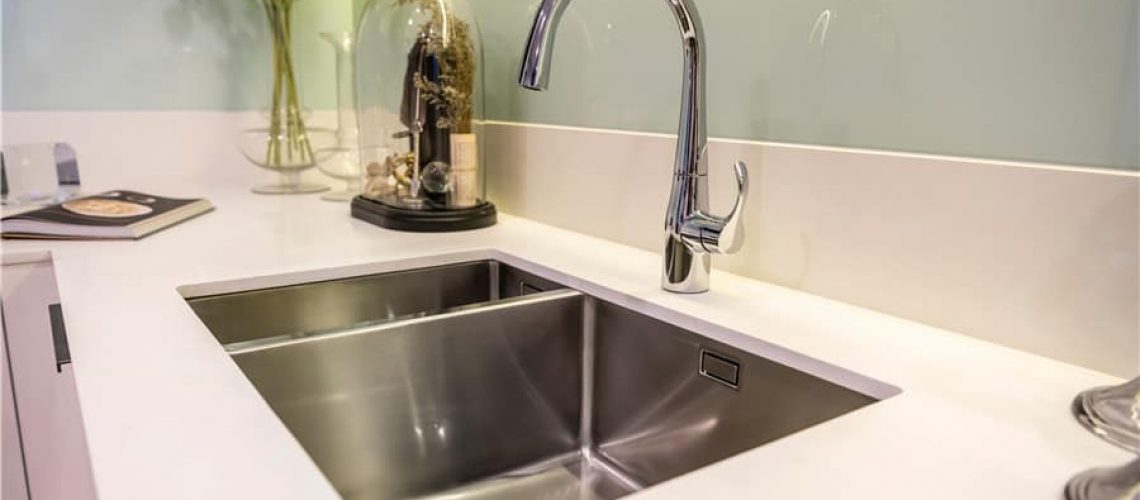Solitamente nel mercato dei sanitari esistono due tipologie di lavelli che hanno guadagnato molta popolarità nel corso degli anni: il lavandino fatto a mano e il lavandino disegnato.
Ognuno di essi ha le sue specifiche e i suoi punti di forza unici, e noi siamo qui per raccontarti tutto al riguardo.
Se non sei a conoscenza di questi due tipi di lavandini, non devi preoccuparti. Ti abbiamo coperto.
Qual è la differenza tra loro?
Le principali differenze tra questi due lavelli sono il processo di fabbricazione e funzione. Alcuni punti essenziali riguardano le differenze tra i due lavelli; questi sono menzionati più avanti.
Dove vengono utilizzati solitamente?
Entrambi questi lavelli sono utilizzati principalmente negli spazi della cucina; tuttavia, non è una regola fissa inserirli nello scenario della tua cucina. Puoi anche usarli anche altrove.
Le persone utilizzano questi lavandini anche in spazi esterni, come bacini per prati e bacini per vicoli. La loro caratteristica migliore è che sono flessibili e si adattano di conseguenza all’ambiente in cui vengono collocati.
Specifiche dei lavelli realizzati a mano e disegnati.
Entrambi i lavelli hanno le loro specifiche e i loro scopi. Iniziamo prima con i lavelli fatti a mano:
Lavelli fatti a mano
Lavelli fatti a mano sono fabbricati utilizzando una tecnica di produzione diversa. Questa tecnica è ad alta intensità di manodopera e richiede più abilità rispetto ad altre tecniche di produzione.

In questo metodo di produzione i lavelli sono pressato con le mani, e gli angoli di quei lavandini sono più tardi saldato insieme. Per questo vengono chiamati lavelli fatti a mano.
Materiale
I lavelli artigianali sono costruiti utilizzando lamiere di acciaio inox. Tuttavia, la qualità dell’acciaio inossidabile dipende dall’azienda da cui acquisti.
Un lavello in acciaio inossidabile di alta qualità costerà più di un acciaio inossidabile di qualità mediocre.
L'acciaio inossidabile è un'opzione eccellente per i lavelli a lavabo. Questo materiale si distingue per un utilizzo intenso e ha una durata più estesa.
Oltre a ciò, il materiale in acciaio inossidabile è più facile da saldare e produrre in quantità significative. Ecco perché l’industria sanitaria utilizza solitamente materiale in acciaio inossidabile.
Sono presenti anche altri materiali, come la ghisa. Questi lavelli garantiscono una durata molto maggiore; tuttavia, possono essere costosi.
Forma e profondità
La forma dei lavelli fatti a mano è solitamente rettangolare o quadrato con quattro angoli saldati. La ripida profondità di 10 pollici offre ampio spazio per vari scopi.
I lavelli vengono utilizzati soprattutto nelle cucine, e questo tipo di profondità porterà una buona quantità di stoviglie nella vasca.
Spessore
IL lavandino fatto a mano lo spessore è pari a 1,2-1,5 mm. Questo spessore è lo standard industriale di base dei lavelli fatti a mano, il fatto che sia relativamente sottile; quindi, non può essere allungato come le sue controparti.
Se durante il processo di produzione il lavandino viene allungato più di quanto possa sopportare, senza dubbio si romperà.
Elaborazione manifatturiera
I lavelli artigianali sono prodotti utilizzando la tecnologia della saldatura laser. Pertanto, la lamiera e l'attrezzatura sono generalmente di qualità migliore.
La saldatura si basa su standard di alta qualità, che potrebbero rivelarsi estremamente durevoli.
Manutenzione
Uno dei problemi più comuni; che ogni utente di lavello fatto a mano sperimenta è mantenere un lavandino fatto a mano.
Il lavandino offre sicuramente a grande profondità e spazio extra per l'utilizzo, ma con ciò richiede anche uno sforzo aggiuntivo per la pulizia e la manutenzione.
Una cosa importante da capire è che la vasca del lavandino fatto a mano è piatta. Non presenta pendenza verso lo scarico presente in un lavandino
Ciò significa che il lavello non scaricherà automaticamente l'acqua dopo l'uso.
Per evitare danni e macchie d'acqua, dovrai pulire e pulire la vasca del lavandino dopo ogni utilizzo. Potrebbe anche essere necessario smaltire i piccoli detriti che di solito rimangono nel bacino.
Per saperne di più su come mantenere i tuoi lavelli nel modo giusto, puoi fare clic Qui e dai un'occhiata a questo articolo.
Lavelli Disegnati
Il lavello disegnato è il tipo più comune di lavello utilizzato Nelle case americane, il lavello è lì ormai da un po' di tempo, e la parte migliore di questo lavello è che è disponibile in molte varianti e può anche essere realizzato su specifiche personalizzate.

Materiale
I lavelli trafilati utilizzano lo stesso materiale dei lavelli realizzati a mano, l'acciaio inox. La differenza fondamentale tra entrambi sta nel processo di produzione e nel design.
Il materiale del lavello trafilato fornirà sicuramente le stesse qualità del lavello fatto a mano, tra cui lucentezza, durata e resistenza alle macchie.
Forma e profondità
La forma del lavabo disegnato è solitamente quella di un forma ovale. Il lavello ha bordi arrotondati con un'area angolare a raggio maggiore.
Questa zona più ampia riduce le dimensioni del lavello trafilato rispetto al lavello realizzato a mano, che ha gli angoli saldati.
La profondità del lavandino disegnato è solitamente di 9 pollici. Questa è la tariffa standard; tuttavia, alcune aziende potrebbero avere dislivelli più profondi. Allo stesso modo, alcuni potrebbero andare con meno profondità.
Spessore
Il modo corretto per misurare lo spessore del lavello è la lettura del "Calibro" menzionato sul lavello. Tuttavia, lo spessore di un lavello trafilato in parole povere varia da azienda ad azienda.
Lo spessore medio standard del settore di un lavello trafilato è pari a 1,5 mm e superiore. Rispetto ai lavelli fatti a mano, questa tariffa è leggermente più alta.
Lo spessore del lavello garantirà una maggiore resistenza all'uso e una durata più lunga di quanto ci si potrebbe aspettare da un lavello dal design più sottile.
Oltre a ciò, lo spessore del lavello aiuta anche a ridurre il rumore metallico di piatti e posate durante il lavaggio.
Processo di fabbricazione
Il processo di fabbricazione di a lavandino disegnato è completamente automatizzato. È ad alta intensità di capitale, e questo è uno dei motivi principali per cui il lavello disegnato viene solitamente venduto a un costo inferiore rispetto al lavello fatto a mano.
La realizzazione di questo lavello è curata da pressatura di una lamiera di acciaio inox by machine. The machine presses the sheet and gives it a specific shape. There is no need to weld the corners or join them together because of the predetermined shapes that are made through the usage of machines.
This is one of the reasons why pressed sinks are available in a greater amount of variants and custom shapes.
Manutenzione
The maintenance of a drawn sink does not require any extra effort. The sink is steep, and the body is designed in such a way that conveys the water towards the drain.
However, it might be good that you take care of it by regularly cleaning it by swiping the surface.
This way, it will stay intact for a longer period of time and also maintain its shine!
Fill in this form to request a quick quote from Chica
Come ispezionare un lavandino fatto a mano?
Per ispezionare a lavandino fatto a mano, ci sono diverse regole che devi tenere a mente. Inizia con l'ispezione degli angoli. Dovrebbero essere a bordo squalo o, in alcuni casi, ben arrotondati, quindi puoi guardare gli angoli saldati.
Assicurati che non vi sia ingiallimento nell'area di saldatura perché ciò significa che non è stata saldata correttamente e potrebbe mettere a repentaglio la qualità del lavello.

Quale è migliore?
Non c'è paragone tra questi due lavandini. A livello di consumatore, tutto dipende da quali sono le preferenze di un singolo consumatore.
A volte le persone di solito preferiscono il lavandino disegnato, a volte le persone preferiscono il lavandino fatto a mano.
Tuttavia, i lavelli trafilati vengono solitamente utilizzati in spazi e interni moderni, e sono completamente regolabili e adattabili a un diverso tipo di ambiente cucina.
D'altra parte, il lavello fatto a mano è un'opzione più costosa che aggiunge sapore e grazia alla tua cucina.
Questi lavelli forniscono un facile accesso durante l'uso e conferiscono un design sublime al tuo ambiente cucina.
Riepilogo veloce
| Lavello fatto a mano | Lavandino disegnato |
| Angoli realizzati e saldati a mano | Lamiera di acciaio pressata automatizzata |
| Lo spessore è compreso tra 1,2 e 1,5 mm max. | Lo spessore è pari a 1,5 mm e oltre. |
| Di solito 10 pollici di profondità. | Di solito profondo 9 pollici. |
| Più spazioso | Meno spazioso |
| Richiede maggiori sforzi di manutenzione | Non richiede molta manutenzione |
Postfazione
Mentre ci spostiamo verso la prossima era tecnologica, esiste un’enorme possibilità che questi modelli di lavelli possano essere sostituiti con versioni migliori e più recenti.
Fino ad allora, questi due lavelli hanno le proprie specifiche e qualità, che dovrebbero essere apprezzate in ogni modo possibile.
Tuttavia, non importa quanti progressi facciamo, potrebbe sempre esserci un mercato per lavelli fatti a mano a causa del fatto che alcune persone effettivamente preferiscono e apprezzano un prodotto costruito a mano.
D’altro canto, potremmo vedere alcuni nuovi sviluppi riguardanti l’automazione nel settore dei lavelli, che sicuramente produrrà lavelli più nuovi e improvvisati a un prezzo inferiore.
Speriamo che questo ti abbia aiutato a capire la differenza tra un lavabo fatto a mano e un lavabo disegnato.











1 pensato a “Lavello fatto a mano VS lavello disegnato”
Pingback: Come vengono realizzati i lavelli in acciaio inossidabile (trafilati)? - Chica Dragon